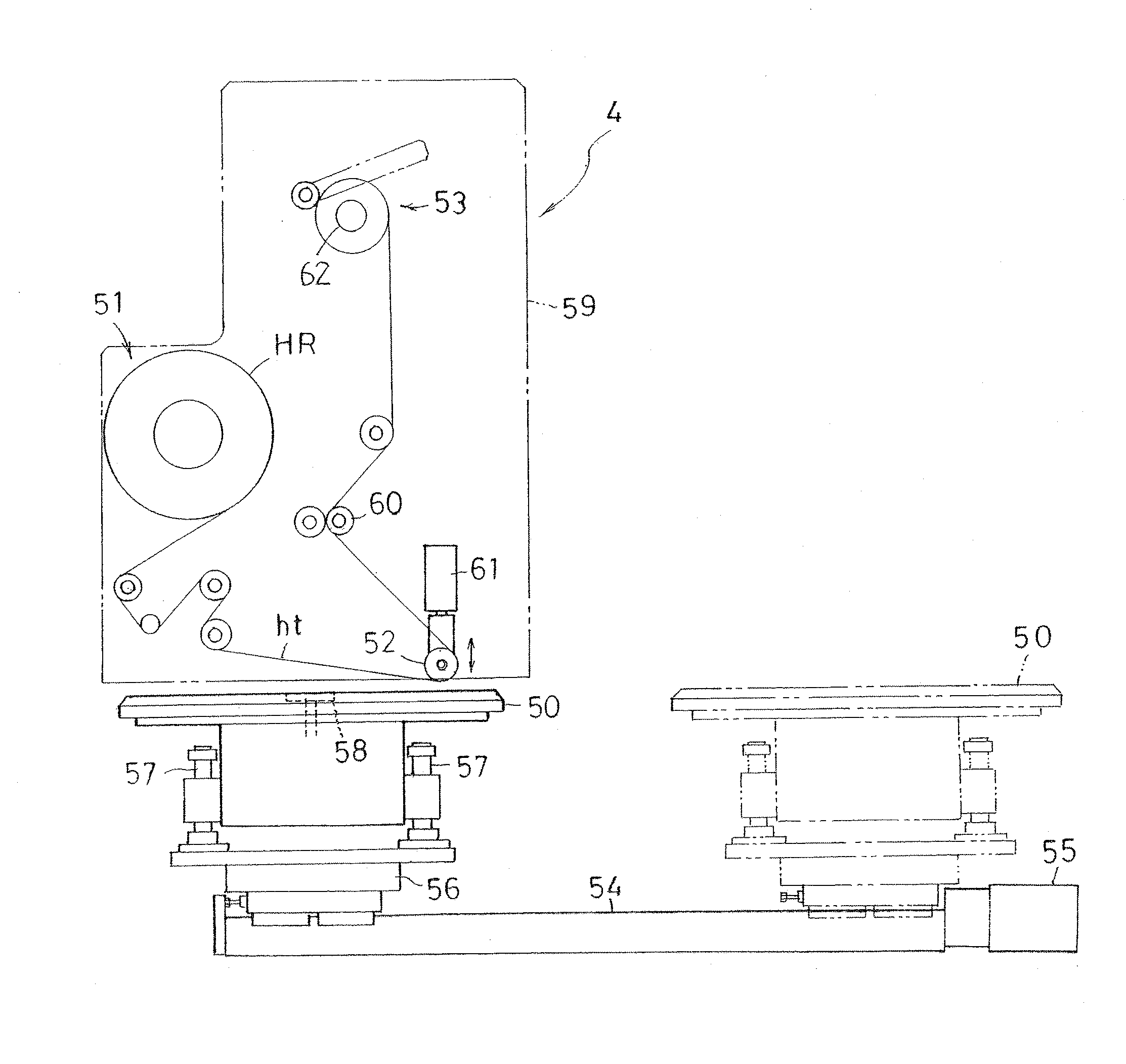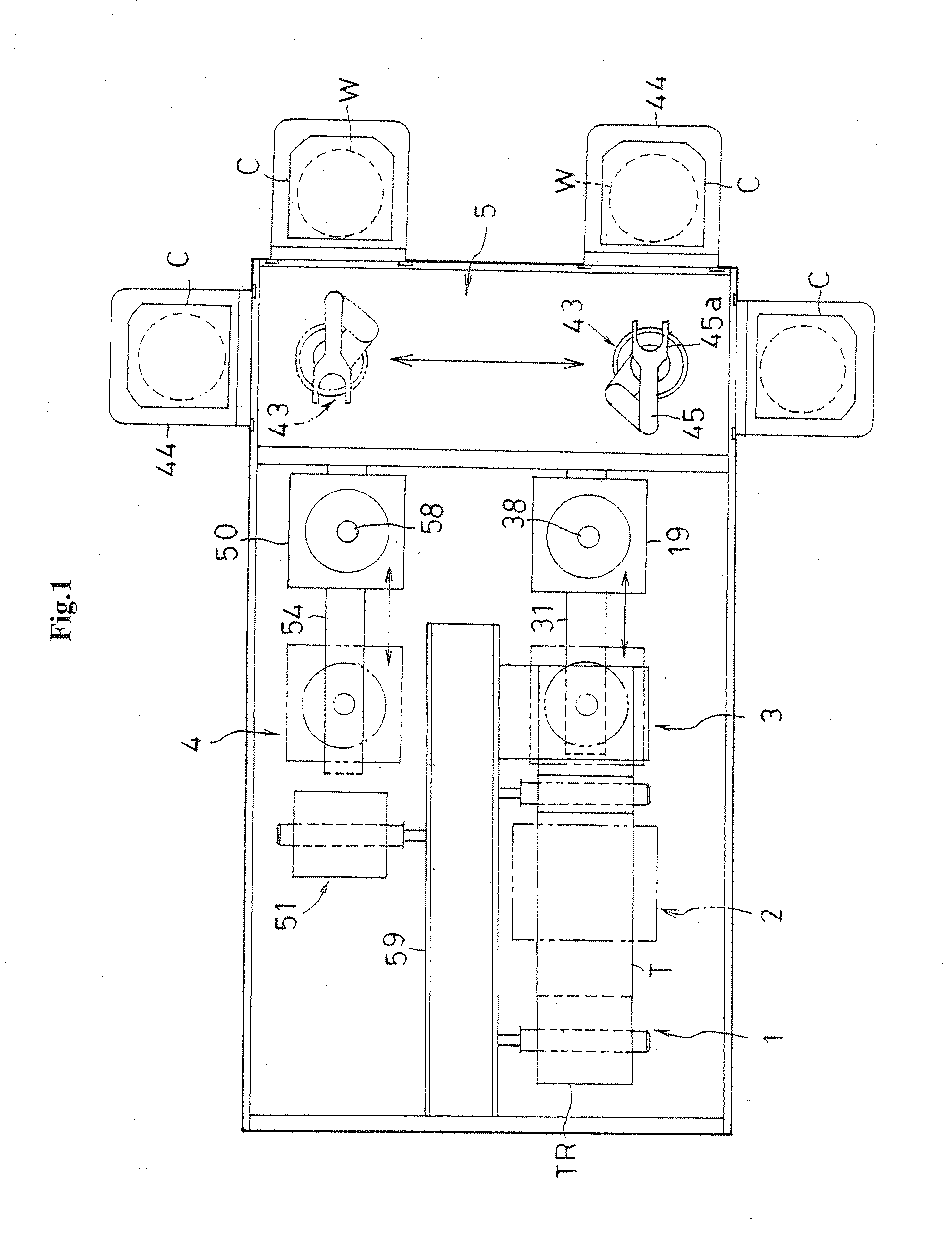Double-faced adhesive tape joining method and double-faced adhesive tape joining apparatus
a double-faced adhesive tape and joining method technology, applied in the direction of layered products, chemistry apparatus and processes, paper/cardboard articles, etc., can solve the problems of non-uniform winding of the tape, tape deformation into a cone shape, and the accuracy of the joining of the piece of double-faced adhesive tape to the substrate is reduced
- Summary
- Abstract
- Description
- Claims
- Application Information
AI Technical Summary
Benefits of technology
Problems solved by technology
Method used
Image
Examples
Embodiment Construction
[0035]One embodiment of this invention is now to be described below with reference to the drawings.
[0036]FIG. 1 is a schematic plan view of double-faced adhesive tape joining apparatus according to this invention. FIG. 2 is a side view of main components thereof.
[0037]The double-faced adhesive tape joining apparatus joins a double-faced adhesive tape for joining a support substrate for reinforcement to a surface of a semiconductor wafer W (hereinafter, simply referred to as a “wafer W”), which is one example of a substrate. A tape supply unit 1, a tape pre-cut mechanism 2, and a tape joining section 3 are placed in series in the longitudinal direction (in the left-right direction in FIG. 1) of the apparatus. A tape separating section 4 is placed on the lateral side (the upper side in FIG. 1) of the tape joining section 3. A long substrate transportation section 5 is placed in the left-right direction (a vertical direction in FIG. 1) as to face toward the tape joining section 3 and t...
PUM
| Property | Measurement | Unit |
|---|---|---|
| shape | aaaaa | aaaaa |
| speed | aaaaa | aaaaa |
| rigidity | aaaaa | aaaaa |
Abstract
Description
Claims
Application Information
 Login to View More
Login to View More - R&D
- Intellectual Property
- Life Sciences
- Materials
- Tech Scout
- Unparalleled Data Quality
- Higher Quality Content
- 60% Fewer Hallucinations
Browse by: Latest US Patents, China's latest patents, Technical Efficacy Thesaurus, Application Domain, Technology Topic, Popular Technical Reports.
© 2025 PatSnap. All rights reserved.Legal|Privacy policy|Modern Slavery Act Transparency Statement|Sitemap|About US| Contact US: help@patsnap.com



